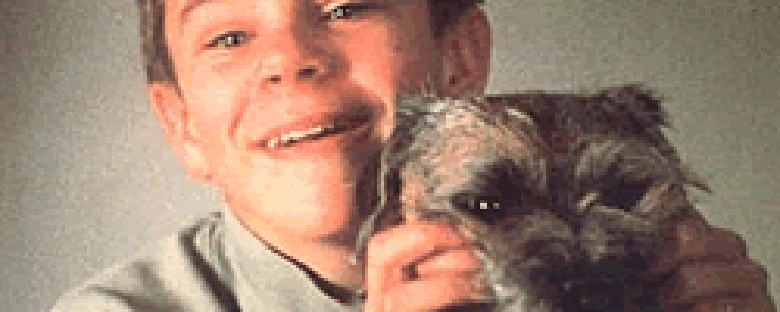Reviews
Mitt liv som hund
Lasse Hallström
Sweden, 1985
Credits
Review by Rumsey Taylor
Posted on 11 July 2004
Source The Criterion Collection DVD
There is an irony at the heart of the “coming of age” film in that, taken from the number of films that apply the thematic formula, the age of the principle character or characters ranges from prepubescence to the mid-twenties. There is the suggestion that the “coming of age” is an act necessary to maturation, and may occur at any point during, roughly, a decade in one’s age beginning at twelve — or so My Life as a Dog attests.
Lasse Hallstrom’s film concerns a boy Ingemar, who lives with his mother, brother, and affectionate dog. His and his brother’s abundant antics disturb his mother (she coughs blood in the aftermath of her unmet demands for silence). Despite his disturbance Ingemar is strongly attached to his mother; he is also a vice that demotes her health.
Ingemar, as the other children in the film, is depicted with a noticeable respect and maturity (actor Anton Glanzelius’ ability is crucial to the role). His life is punctuated by expected free leisure, yet he is embittered by a deeper range of emotive values. Ingemar has only nascent exposure to sex and conflict, yet in frequent voice-over monologues cites cases of botched stunts and records — he is intrigued by death, the threat of which he perceives to give life value. It is a thought willfully underplayed in the film that exposes the capacity of thought in its central character — again, a twelve-year-old boy. (Ingemar is particularly concerned with the lack of sympathy in Laika’s poor fate as the first animal sent into space.)
Ingemar is sent to live with his uncle, for his mother’s good will, in a rural location containing an artist, a glass factory, and some mysterious Greeks (these examples are not forcibly included). Even faces in the film’s periphery are distinctive and briefly unique, and each has conflicts that are idiosyncratically exclusive.
The title of the film is fleeting in its meaning, although referenced abundantly. In a playful sparring match, Ingemar exhibits his angst with barks and growls. At his former home, Ingemar’s dog was as close as a family member. Interpretably, he seems to appreciate the mutt’s lack of responsibility and default happiness. There is an incredibly evocative slow-motion chase, late in the film (a flashback), in which the boy chases his dog underneath his mother’s bed (the scene includes a shot of her trademark scream). It is a moment that epitomizes the happiness Ingemar has as a child. But it is just that — a moment whose tragic briefness punctuates an existence filled with continual oppression. This scene encapsulates the film; Ingemar longs to age, to confront life with experience, yet he longs to retain the amenities of his childhood. The film represents the point at which such amenities begin to fleet.
Throughout My Life as a Dog exterior, static shots of a star-filled sky repeat. This motif relays the film’s optimism; that even a life without abundant strife has possibility, opportunity, and dreams. The image is emblematic of the film’s optimism and familiar to those who have shared its protagonist’s innocence.
We don’t do comments anymore, but you may contact us here or find us on Twitter or Facebook.



